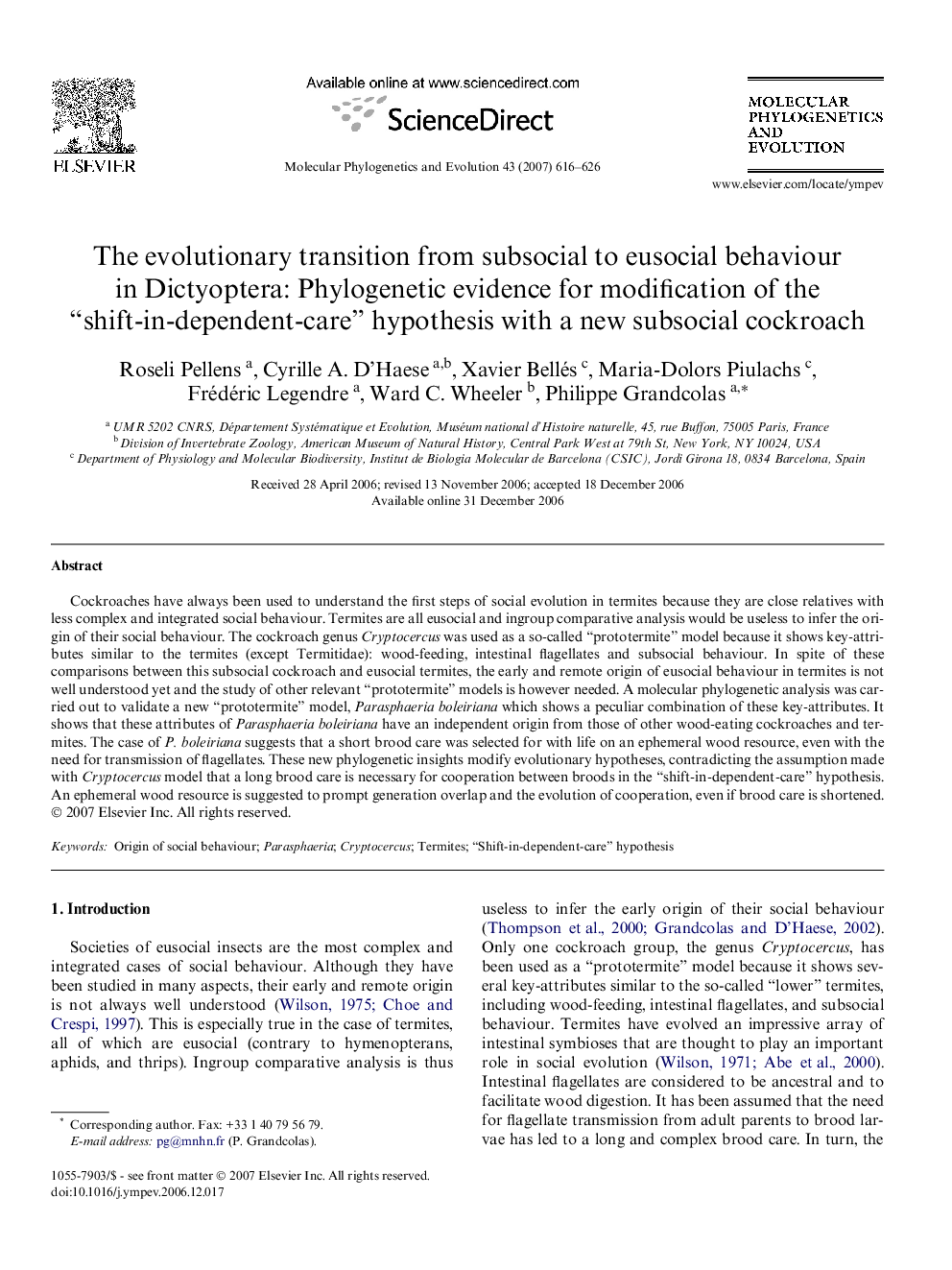| کد مقاله | کد نشریه | سال انتشار | مقاله انگلیسی | نسخه تمام متن |
|---|---|---|---|---|
| 2835886 | 1164356 | 2007 | 11 صفحه PDF | دانلود رایگان |

Cockroaches have always been used to understand the first steps of social evolution in termites because they are close relatives with less complex and integrated social behaviour. Termites are all eusocial and ingroup comparative analysis would be useless to infer the origin of their social behaviour. The cockroach genus Cryptocercus was used as a so-called “prototermite” model because it shows key-attributes similar to the termites (except Termitidae): wood-feeding, intestinal flagellates and subsocial behaviour. In spite of these comparisons between this subsocial cockroach and eusocial termites, the early and remote origin of eusocial behaviour in termites is not well understood yet and the study of other relevant “prototermite” models is however needed. A molecular phylogenetic analysis was carried out to validate a new “prototermite” model, Parasphaeria boleiriana which shows a peculiar combination of these key-attributes. It shows that these attributes of Parasphaeria boleiriana have an independent origin from those of other wood-eating cockroaches and termites. The case of P. boleiriana suggests that a short brood care was selected for with life on an ephemeral wood resource, even with the need for transmission of flagellates. These new phylogenetic insights modify evolutionary hypotheses, contradicting the assumption made with Cryptocercus model that a long brood care is necessary for cooperation between broods in the “shift-in-dependent-care” hypothesis. An ephemeral wood resource is suggested to prompt generation overlap and the evolution of cooperation, even if brood care is shortened.
Journal: Molecular Phylogenetics and Evolution - Volume 43, Issue 2, May 2007, Pages 616–626